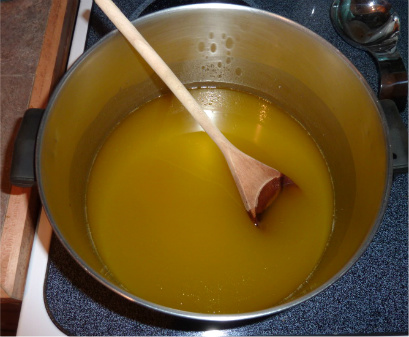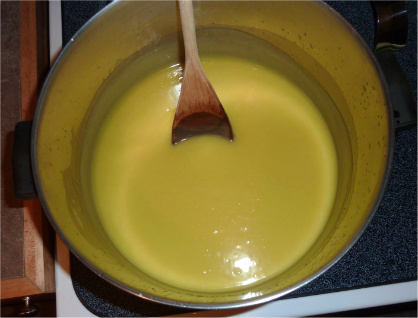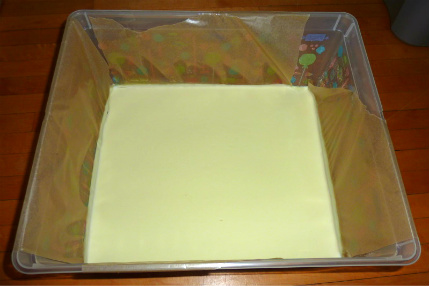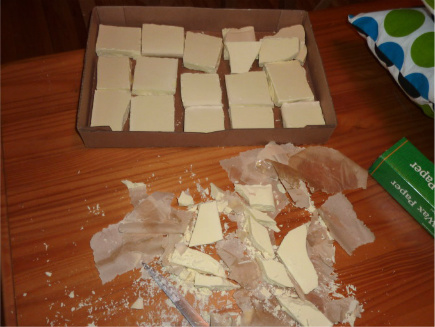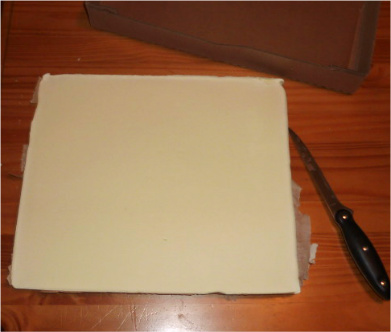
While not every batch turns out quite right, making your own lye soap can be fun and satisfying.
I made my first batch of lye soap a little over 10 years ago. I didn’t have any proper equipment ( I still don’t) and my honey oatmeal bars didn’t turn out so well. I had a lot to learn, and well, since I only make a batch once a year at most, I still haven’t learned.
I remember how miserable it was to make my first batch. It was about 98 degrees in my little apartment kitchen and standing over the stove was a bad idea. I was making a 100% vegetable based soap with no coconut oil, which meant stirring for about six hours to reach tracing. I had never heard of a stick blender back then.
I decided to try out a couple small batches again this Fall in the hopes of giving some nice soap bars out as Christmas gifts. Armed with coconut oil and an immersion blender, I expected this time to go much more smoothly. And it did. Although, it was not quite successful.
After a little tweaking, this was my final recipe.
Lemon Mint Lye Soap recipe
- 15 oz coconut oil
- 28 oz olive oil
- 6 oz lye (sodium hydroxide)
- 16 oz cool water
Mix water and lye in a glass bowl using a wooden spoon. It puts off some wicked fumes, so open a window. It is best to wear gloves when dealing with lye. If you get any lye and water on your skin, flush it with vinegar.
Add oils to a stainless steel pot and slowly heat until well mixed. Let both the oil and lye cool down to about 120 degrees Fahrenheit. Once they reach about this temp, you can pour the lye mix into the oil pot. Stir with the wooden spoon until it is well mixed.
Since coconut oil is solid at temps below 76 degrees, you will reach “tracing” much more quickly than with using other oils. Tracing is when then mixture has “sapponified” enough that you can trace a slightly visual line over the top of the soap. In an all vegetable soap without coconut oil, this can take several hours when hand stirring. Luckily, I now have a stick blender which makes the whole process take about five minutes. I just ran the immersion blender through it until it reached the consistency of a very runny pudding.
Once you reach tracing, you can add your essential oils for scent, or a moisturizing oil. I added 1.3 oz of lemon oil, and 0.4 oz of peppermint oil. It ended up being way too much peppermint oil and the lemon is basically undetectable. Also, this was likely too much essential oil altogether.
Once the scent oils are mixed in, pour it all into you soap mold. My soap mold was a plastic tub from Target. some people like to use cheap litter boxes for soap molds. I lined mine with wax paper to make it easier to remove the brick later.
Once you have tapped the mold to get out the air bubbles, cover it and set on an even surface in a warm room. Cover your box with a blanket or heavy towel. You want it to retain some heat while it sets. Unfortunately, this is where I run into problems. Up here there is no such thing as a warm room between September and June. Because my mold was too cold, I needed to remove the soap and slice it much sooner than usual. Normally your soap should set in the mold for 12-18 hours. Mine needed to come out closer to six hours. But instead, I didn’t get to it until 12 hours after pouring.
This resulted in a dry, brittle soap brick. It was difficult to cut and mostly crumbled. I scored the outlines for bars very carefully, but my soap bars came out less than pretty. First of all, I used a slightly too high ratio of coconut oil. Using anything more than 1/3 coconut oil will give a dry bar that can dry your skin. Second, was the issue with the cold room.
Once your bars are cut, find a clean,cool place for them to cure for 6-8 weeks. They could be ready in as little as three weeks, but in my experience it takes much longer. If you use the bar too early, it can really irritate your skin or even cause a burn. Also, it will not work as well. Your bars might sweat a little depending on the recipes you use.
My un-pretty soap will still work. Although with all the peppermint oil and the drying coconut oil ratio, it might be better as a dandruff fighting shampoo bar. Once it finishes curing, I will try it out and decide if I can give the nicer looking bars as gifts. The broken bits and shavings will make decent liquid handsoap. If your bars come out not looking too pretty, you can also felt the bars with some wool.
This coming weekend, I am going to try my hand at my first lard containing soap.


